当前位置:网站首页>[three storage methods of graph] just use adjacency matrix to go out
[three storage methods of graph] just use adjacency matrix to go out
2022-07-06 09:09:00 【Easenyang】
Preface :
When storing graphs , Most of us think of using adjacency matrix at the first time , But sometimes it may not solve our problems well , We should consider using other storage methods .
Figure of the storage :
One 、 sketch
All operations on graphs need to be based on a stored graph , The storage structure of the graph must be an orderly structure , It can make the program locate nodes quickly u u u and v v v The edge of ( u u u, v v v), We generally use 3 A data structure storage diagram :
Adjacency matrix 、 Adjacency list and Chain forward star
Two 、 storage
1. Adjacency matrix :
Adjacency matrix storage is based on two-dimensional array :
int[][] g = new int[N+1][N+1];
use g[i][j] Represents a node u u u To v v v A weight ,g[i][j] = INF Express i i i and j j j There's no limit
For undirected graphs :g[i][j] = g[j][i];
For digraphs :g[i][j] != g[j][i];
for instance :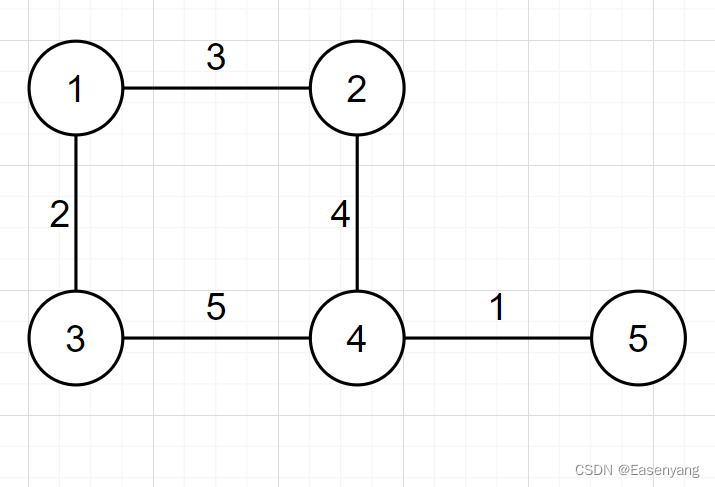
For the storage of this graph , node 1 and 2 A weight of 3, Order g[1][2] = g[2][1] = 3, node 2 and 5 There's no limit , Order g[2][5] = g[5][2] = INF.
The common practice is to initialize the weights between all nodes as INF, Then update the weights between points according to the graph
advantage :
Suitable for dense map ; The coding is very short ; Storage of opposite sides 、 Inquire about 、 Updating and other operations are fast and simple , It only takes one step to access and modify
shortcoming :
- Storage complexity O ( V 2 ) O(V^2) O(V2) Too high . If used to store sparse graphs , A lot of space will be wasted . For example, the figure above ,5 Nodes ,10 side (g[ i ][ j ] and g[ j ][ i ] Count two sides ), but g[5][5] The space of is 25. When the node of the graph V=10000 when , Space for 100MB, More than common ACM Space limitation of competition questions , The graph of onemillion points is ACM Questions are very common
- In general , Cannot store duplicate edges .( u u u, v v v) There may be two or more sides between , Their weights are different , It can't be merged
2. Adjacency list
For large-scale sparse graphs , Generally, adjacency tables are used to store . In short, store the adjacent edges of each point , In this way, the graph can be stored .
We can define one edge Class to represent edges , And define 3 A variable from, to, w. Respectively representing the side The starting point 、 End and A weight .
class edge {
int from, to, w; // The starting point of the edge 、 End point and weight
public edge(int a, int b, int c) {
// Construction method
this.from = a;
this.to = b;
this.w = c;
}
}
Then define a set to store the adjacent edges of each point . It should be noted that ,c++ Dynamic arrays can be used in vector Store adjacent edges
struct edge{
int from, to, w;// The starting point , End , A weight
edge(int a, int b, int c){
from=a; to=b; w=c;
}
};
vector<edge> e[N];// Dynamic array stores adjacent edges
and Java You cannot create generic arrays directly :ArrayList<edge>[] lists = new ArrayList<edge>[N]; This is wrong . We can consider the way of storing sets :
List<List<edge>> list = new ArrayList<>();
for (int i = 0; i <= N; i++) {
list.add(new ArrayList<>());// First assign an empty set of adjacent edges to each point
}
To visit i The adjacent side of the point , Can pass list.get(i) return i Set of adjacent edges of points
for instance :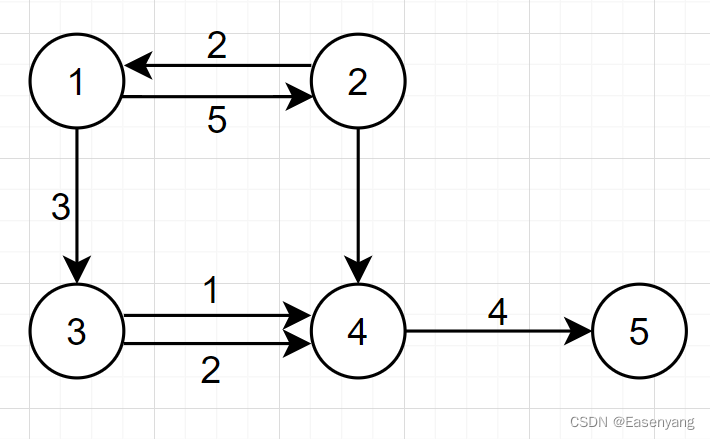
For the storage of this graph , Double edge , But it doesn't affect , Because we operate the side , node 3 and 4 The two sides of are respectively new Two edge object , Then add the adjacent edge set of the corresponding node :
edge e1 = new edge(3,4,1);
edge e2 = new edge(3,4,2)
list.get(3).add(e1); // First obtain the adjacent edge set of the corresponding node , Then put the adjacent edges into the set
list.get(3).add(e2)
The storage of other edges is the same
advantage :
High storage efficiency , Just need a space proportional to the number of sides , The storage complexity is O ( V + E ) O(V + E) O(V+E), Almost the optimal complexity , And it can Store heavy edges
shortcoming :
Programming is more troublesome than adjacency matrix , Access and modification are also slow
3. Chain forward star :
Using adjacency table to store graph is very space saving , General large pictures are also enough , If space is extremely tight , We can consider a more compact way of storing pictures : Chain forward star .
It is an improvement of adjacency table , Don't use sets ( Or an array ) To store all adjacent edges of a point , Directly store an adjacent side , Then the adjacent edge points to the next adjacent edge , By analogy . Its implementation can be based on several one-dimensional arrays .
- Store all points The first adjacent side Array of :
int[] head = new int[N+1](N Is the number of points ) - Store the current side Next adjacent side Array of :
int[] next = new int[M+1](M It's the number of sides ) - Store the current side is To which point Array of :
int[] e = new int[M+1] - Store side A weight Array of :
int[] w = new int[M+1]
for instance :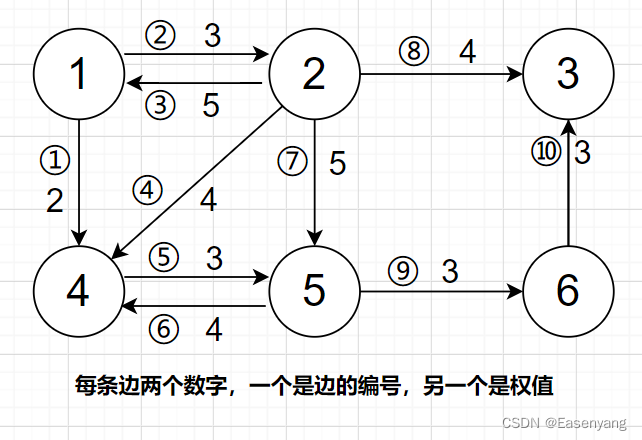
The storage of each array is as follows :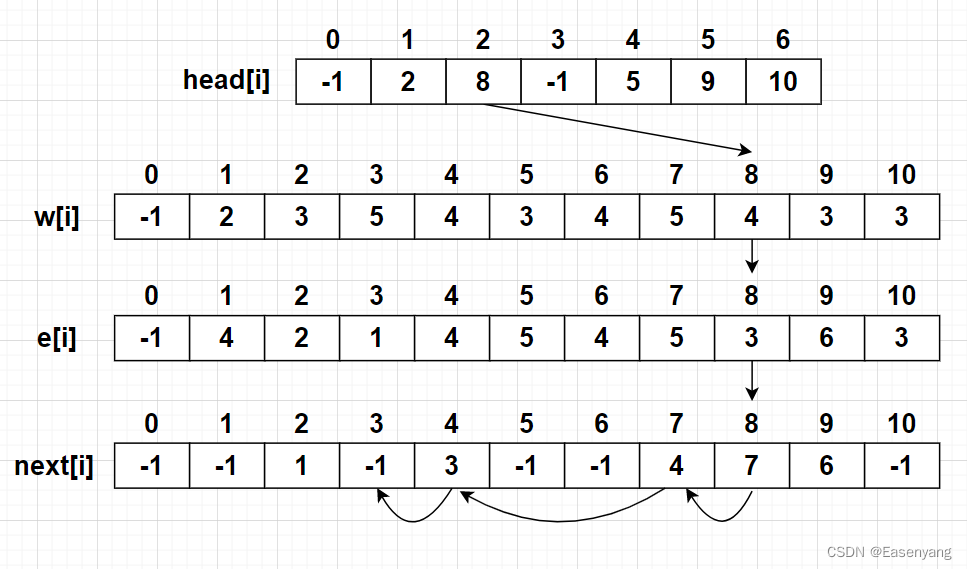
Analysis node 2 The storage ,head[2] = 8 Express 2 The first adjacent side of node No. is 8 Border No ,e[8] = 3 Express 8 The point from the No. side is 3,next[8] = 7 Express 8 The adjacent side of side number is 7, Then look for it 7 The adjacent side of the number side , And so on , Until one side has no adjacent side , namely next[i]=-1. Finally find the node 2 Next to ( 8 , 7 , 4 , 3 ) (8,7,4,3) (8,7,4,3), adopt w[8],w[7],w[4],w[3], You can find the weight of its adjacent edge head[i] = -1 Express i The node has no edge to other points , That is, you can't go to any point next[i] = -1 Express i The next adjacent edge does not exist
initialization :
Arrays.fill(head, -1); // The first adjacent edge of each initial point is -1
Arrays.fill(w, -1); // Initialize the weight of each side to -1
Arrays.fill(e, -1); // Initialize the end point of each side to -1
Arrays.fill(next, -1); // Initialize the next adjacent edge of each edge to -1
Store an edge Code for :
public static void add(int u, int v, int k) {
//u Starting point ,v It's the end ,k Is the weight
//cnt Which side is the record currently stored
w[cnt] = k; // Store the weight of the edge
e[cnt] = v; // Set the ending point in front as v
ne[cnt] = h[u]; // Update the next adjacent edge of the current edge to u Click the old current adjacent edge
h[u] = cnt++; // to update u The first adjacent edge of the point
}
With the help of nodes 2 Of head[2] Change to understand code :
head[2]: -1、3、4、7、8, Final direction 8 Border No , And then we can go through next[8] Go find 7 No. adjacent side , Re pass next[7] Go find 4 No. adjacent side , next next[4] find 3 No. adjacent side ,next[3] = -1, It means there is no adjacent side .
Look again Visit all adjacent edges of a point Code for :( Suppose the access node 2)
for (int j = head[2]; j != -1; j = next[j])
System.out.println(j); //j It's the node 2 An adjacent side number of
With the help of the above idea, we can find the elements of the graph . In this way, the Chain forward star How to store
Chained forward stars have the same advantages and disadvantages as adjacency lists , But it is better than adjacency table in space storage
therefore , Different requirements for graph problems , We should learn to flexibly use the corresponding storage methods , It is necessary to firmly grasp these three storage methods .
If it helps you , Please support the third company , thank you !!!
边栏推荐
- Leetcode: Jianzhi offer 03 Duplicate numbers in array
- LeetCode:26. Remove duplicates from an ordered array
- LeetCode:214. Shortest palindrome string
- Selenium+pytest automated test framework practice (Part 2)
- 数学建模2004B题(输电问题)
- [OC]-<UI入门>--常用控件-提示对话框 And 等待提示器(圈)
- An article takes you to understand the working principle of selenium in detail
- Improved deep embedded clustering with local structure preservation (Idec)
- Intel Distiller工具包-量化实现1
- [MySQL] limit implements paging
猜你喜欢
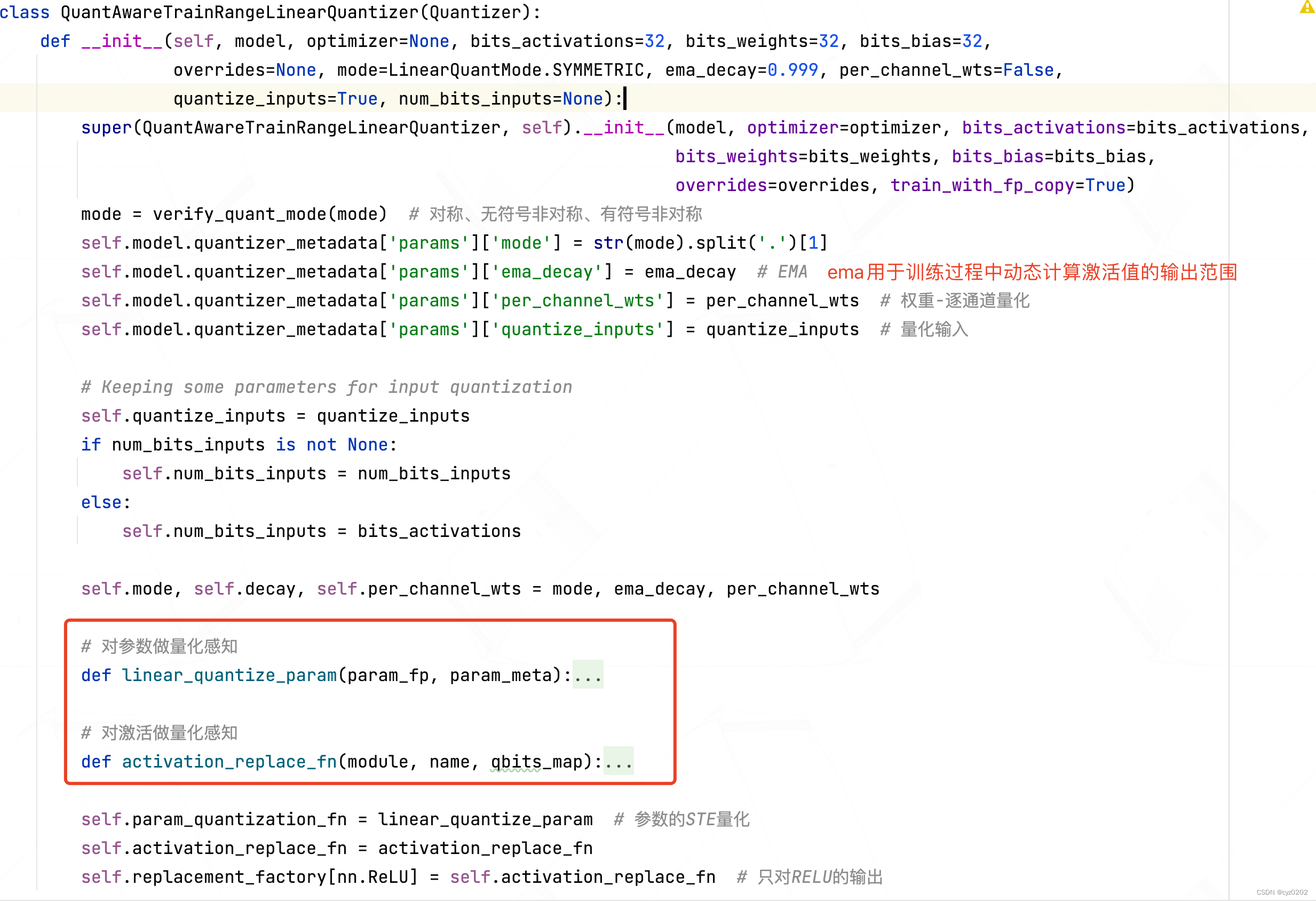
Intel Distiller工具包-量化实现3

KDD 2022 paper collection (under continuous update)

Mise en œuvre de la quantification post - formation du bminf

Advanced Computer Network Review(4)——Congestion Control of MPTCP
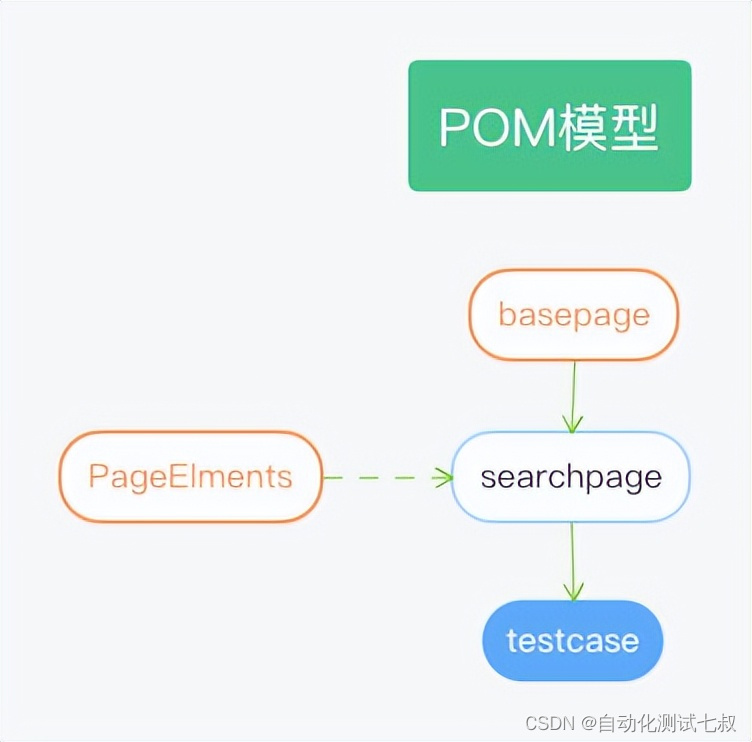
Selenium+pytest automated test framework practice
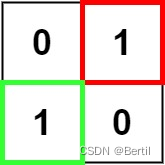
LeetCode:221. Largest Square
![[MySQL] limit implements paging](/img/94/2e84a3878e10636460aa0fe0adef67.jpg)
[MySQL] limit implements paging
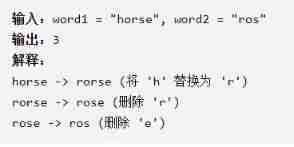
Detailed explanation of dynamic planning
![[OC foundation framework] - [set array]](/img/b5/5e49ab9d026c60816f90f0c47b2ad8.png)
[OC foundation framework] - [set array]
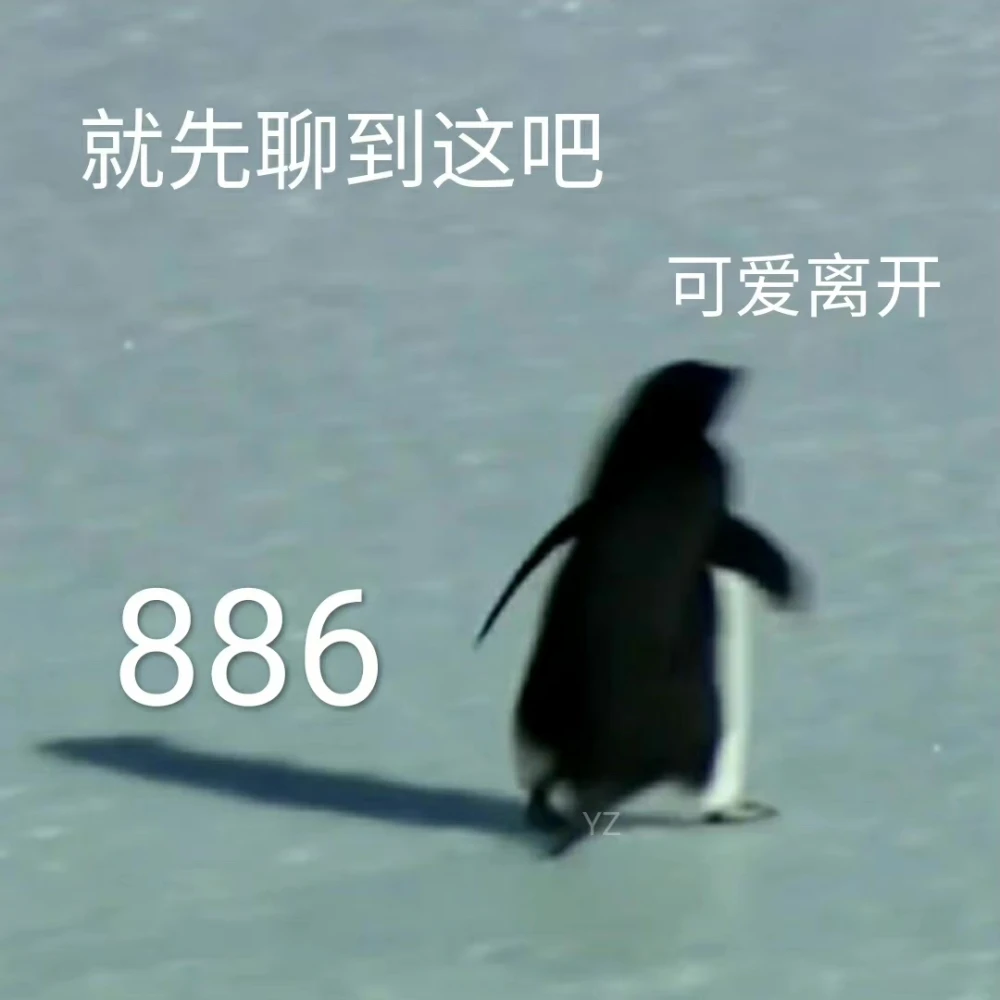
Pytest's collection use case rules and running specified use cases
随机推荐
Implement window blocking on QWidget
Show slave status \ read in G_ Master_ Log_ POS and relay_ Log_ The (size) relationship of POS
Pytorch view tensor memory size
Cesium draw points, lines, and faces
Pytest's collection use case rules and running specified use cases
Revit secondary development Hof method calls transaction
Mathematical modeling 2004b question (transmission problem)
Super efficient! The secret of swagger Yapi
[today in history] February 13: the father of transistors was born The 20th anniversary of net; Agile software development manifesto was born
BMINF的後訓練量化實現
Leetcode: Sword finger offer 42 Maximum sum of continuous subarrays
LeetCode:498. 对角线遍历
【图的三大存储方式】只会用邻接矩阵就out了
go-redis之初始化连接
使用标签模板解决用户恶意输入的问题
Computer graduation design PHP Zhiduo online learning platform
LeetCode:394. 字符串解码
[OC-Foundation框架]--<Copy对象复制>
Redis之Bitmap
Advanced Computer Network Review(4)——Congestion Control of MPTCP